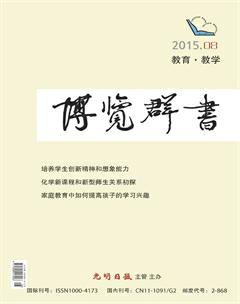Preceding Objects in Pre—Qin Archaic Chinese
曹曦
Abstract This paper proposes a brief analysis of the preceding objects in Archaic Chinese Pre-Qin. First, in this paper, I introduce the current research of the preceding objects in Archaic Chinese Pre-Qin. Then by citing some sentences from main documents and literatures Pre-Qin, the paper tries to illustrate the demonstration of preceding objecting in Archaic Chinese Pre-Qin in different syntactic structures. In the final part, the paper explains the features of the preceding objects in Archaic Chinese Pre-Qin, trying to find the answers for the reasons of the gradual fade of the preceding objects Pre-Qin after Han Dynasty.
Keywords: Archaic Chinese;preceding objects;Syntax;Inflection.
1 Introduction
Chinese is not an inflectional language; instead its word-order and particles are two useful tools to present its syntactic structures. Therefore, word-order plays an initial role in Archaic Chinese grammar
2 preceding objects in Negatives
When an object functions as a pronoun in a negative sentence, it is always a preceding object. The following saying is an example from The Analects.
From the above analyses, we want to find the reasons for the existence of preceding objects in negative structures in Pre-Qin Archaic Chinese. We can see that the basic form of the negative sentence structure is like this: Subjects+negatives+pronominal objects+verbs. What is this formation tells us it that pronominal preceding objects relate with negatives syntactically and with verbs semantically in the structure.
3 The interrogative pronouns are preceding objects in Pre-Qin Archaic Chinese
By studying the interrogative pronouns in the Classics of Ancient Chinese Literatures, I also find that interrogative pronouns can also be preceding objects in Pre-Qin Archaic Chinese. In the following part of this section this paper will illustrate this issue from the following aspects. First, we analyze the basic syntactic structures of the sentences in which interrogative pronouns are preceding objects .Then by the analysis, we make a summary of the situations where interrogative pronouns are preceding objects in Pre-Qin Archaic Chinese
4. The preposition “Yi is a preceding object in the declarative structures
In the Early Archaic Chinese, “yi” is a verb meaning “consider”, “think” or “use”. For example:
bu yi bing che, guan zhong zhi li ye(The Analects)
Not use weapons and soldiers Guanzhong Gen. power Top.
We can win the battle only with Guangzhongs power without any military powers.
But with the development of the Early Archaic Chinese, the verb has changed to a preposition. And in the syntactic structure in Archaic Chinese Pre-Qin, only when “yi”is in the prepositional phrase, can it be a component of the syntactic structure. In one of the documents of The Classic Literatures of Ancient Chinese, The Analects, we can find many preceding objects before the preposition “Yi”. Let us see some typical examples from The Analects.
5.The Reasons for the existence of the preceding objects in Archaic Chinese Pre-Qin
The preceding objects in Pre-Qin Archaic Chinese are very typical in the syntactic structure of ancient Chinese. And we may ask why the preceding objects exist in Pre-Qin Archaic Chinese, but disappear after Han Dynasty. Different scholars have different view about this phenomenon. Among them, Xing, Gongwan and Yu, min think that the preceding objects in Pre-Qin Archaic Chinese are the historical remains of the SOV syntactic structure of Early Ancient Archaic Chinese(Early Ancient Chinese refers to language used by people living in the period pre to 3rd or 4th centuries B.C.) Conversely, Shi, Yuzhi and Xujie argues that the basic syntactic structure is SVO in Early Ancient Chinese, but with the development of Archaic Chinese, the semantic function of preceding objects is to intensify the contents carried by the preceding objects.
In the paper, I briefly introduce the preceding objects and its development in Archaic Chinese Pre-Qin. However, there are still some problems remained to be solved. First, I just give a description of the main types of preceding objects in the syntactic structures in Archaic Chinese Pre-Qin, instead of all circumstances of that. Second, this paper does not give a proper explanation for the existence of preceding objects in the Archaic Chinese Pre-Qin, but its rarity after Han Dynasty, which is a hot debated issue by the researchers of Chinese. I believe that there is a strong necessity for us to study the development of Chinese, which can help us a lot for studying the development of our Chinese culture. Because language and culture are two closely related entities in that language is the carrier of culture, and conversely culture is the representation of language. Moreover, the change of language must lead to the change of culture. Therefore, by studying the features of ancient Chinese, we are at the same time let the world know more about our culture and our language.
References:
[1]Chen, Mengjia. 2004. The Introduction of the Oracle Inscriptions in Yinxu: 61-130.
[2]Guo, Xiliang. 2005. A Brief introduction of Chinese language History [C]. Beijing: Commercial Press.
[3]Guo, Xiliang. 1999. Ancient Chinese [M]. Beijing: Commercial Press.

